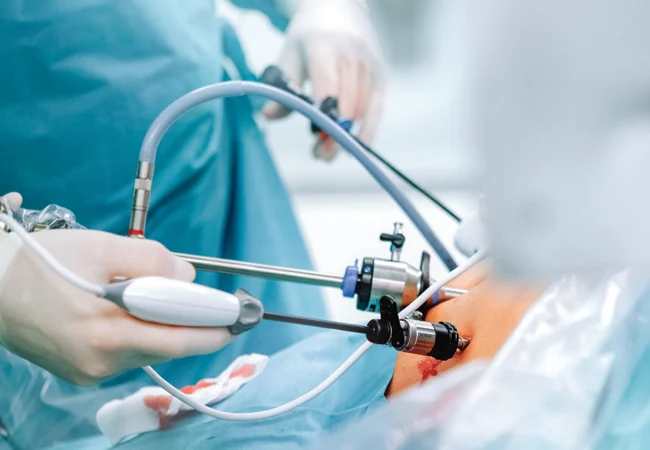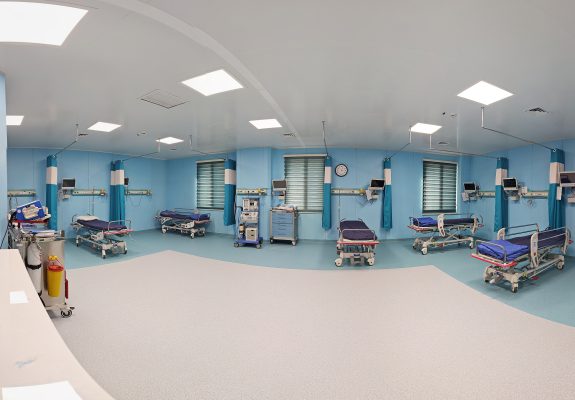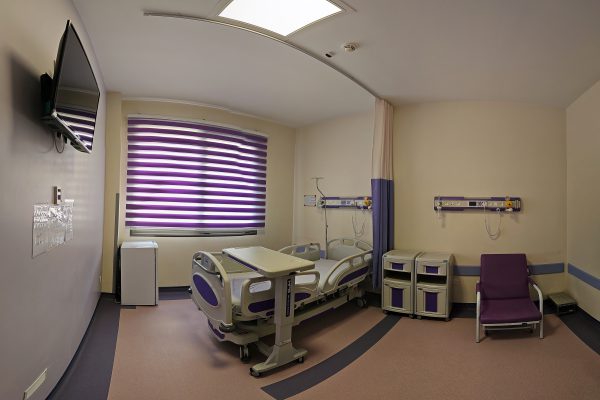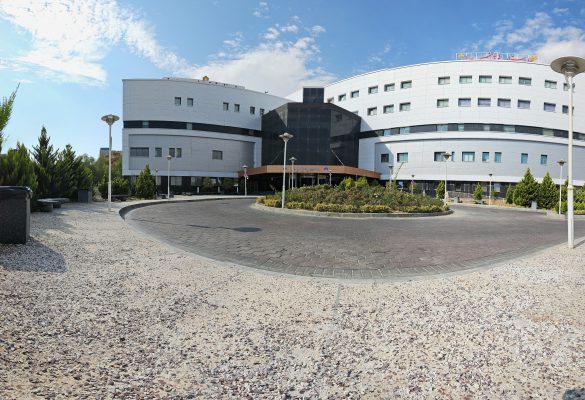What to expect from best sleeve gastrectomy surgeon in Iran
When you meet with a best sleeve gastrectomy surgeon in Iran, you can expect them to:
- Discuss your weight loss goals and expectations.
- Review your medical history and current health status.
- Perform a physical examination.
- Order preoperative tests, such as blood work and imaging studies.
- Discuss the risks and benefits of sleeve gastrectomy.
- Explain the surgical procedure in detail.
- Answer any questions you have.
The best sleeve gastrectomy surgeon in Iran should also provide you with written information about sleeve gastrectomy, including the risks, benefits, and what to expect before, during, and after surgery.
Here are some specific questions you may want to ask best sleeve gastrectomy surgeon in Iran:
- What is your experience with sleeve gastrectomy?
- What are the risks of sleeve gastrectomy?
- What are the benefits of sleeve gastrectomy?
- What is the success rate of sleeve gastrectomy?
- What is the typical weight loss after sleeve gastrectomy?
- What are the long-term effects of sleeve gastrectomy?
- What are the dietary restrictions after sleeve gastrectomy?
- What are the lifestyle changes I will need to make after sleeve gastrectomy?
If you want to operate in Tehran Adl Hospital, click the button below and follow the steps
It is important to choose a surgeon who is experienced in sleeve gastrectomy and who you feel comfortable with. You should also make sure that the surgeon is board-certified and that the surgery will be performed in an accredited facility.
After your initial consultation, the surgeon will likely schedule a preoperative appointment to review your medical history and test results, and to give you specific instructions on how to prepare for surgery.
Sleeve gastrectomy procedure step by step
Sleeve gastrectomy surgery is typically performed laparoscopically, which means that the surgeon makes several small incisions in the abdomen and inserts a camera and specialized instruments. The procedure is performed in the following steps:
1. Preparation: The patient is given general anesthesia and the surgical site is sterilized.
2. Incisions: The surgeon makes several small incisions in the abdomen, typically near the belly button and along the bikini line.
3. Camera insertion: A small camera (laparoscope) is inserted through one of the incisions to visualize the stomach and surrounding organs.
4. Stomach division: The surgeon uses surgical instruments to divide the stomach vertically into two parts.
5. Sleeve creation: The larger, left portion of the stomach is removed, leaving behind a narrow sleeve or tube.
6. Closure: The remaining stomach sleeve is stapled and reinforced with sutures to create a new, smaller stomach.
7. Leak test: The best sleeve gastrectomy surgeon in Iran may perform a leak test by filling the stomach sleeve with a blue dye to check for any leaks.
8. Removal of instruments: The laparoscope and surgical instruments are removed.
9. Closure of incisions: The incisions are closed with sutures or staples.
The entire procedure typically takes 1-2 hours to complete. After surgery, the patient will be taken to the recovery room for monitoring.
Once the patient is stable, they will be transferred to a hospital room where they will typically stay for 1-2 days. During this time, they will be given pain medication and intravenous fluids. They will also be started on a clear liquid diet and gradually progress to a soft diet as tolerated.
Before being discharged from the hospital, the patient will be given specific instructions on how to care for their incisions, what to eat, and what activities to avoid. They will also be scheduled for follow-up appointments with their surgeon to monitor their progress and ensure that they are healing properly.
During sleeve gastrectomy surgery
During sleeve gastrectomy surgery, the patient is under general anesthesia and the surgical site is sterilized. The surgeon then proceeds with the following steps:
1. Incisions: The surgeon makes several small incisions in the abdomen, typically near the belly button and along the bikini line.
2. Camera insertion: A small camera (laparoscope) is inserted through one of the incisions to visualize the stomach and surrounding organs.
3. Stomach division: The surgeon uses surgical instruments to divide the stomach vertically into two parts. The larger, left portion of the stomach is the part that will be removed.
4. Sleeve creation: The surgeon uses a stapling device to divide the stomach vertically and create a narrow sleeve or tube. The stapled line is reinforced with sutures to create a secure closure.
5. Leak test: The surgeon may perform a leak test by filling the stomach sleeve with a blue dye to check for any leaks.
6. Removal of instruments: The laparoscope and surgical instruments are removed.
7. Closure of incisions: The incisions are closed with sutures or staples.
The entire procedure typically takes 1-2 hours to complete.
During surgery, the best sleeve gastrectomy surgeon in Iran will also take steps to:
- Preserve the vagus nerve, which is important for stomach function and emptying.
- Avoid damaging the spleen, which is located near the stomach.
- Check for and repair any hernias that may be present.
Once the surgery is complete, the patient will be taken to the recovery room for monitoring.
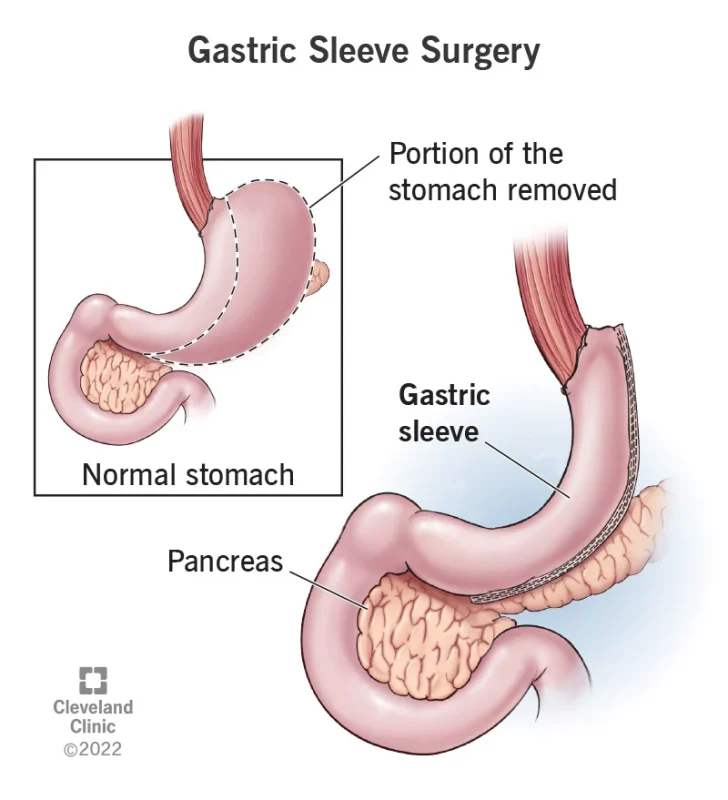
Recovery after sleeve gastrectomy surgery
Recovery after sleeve gastrectomy surgery typically takes a few weeks. Here is what you can expect:
- Immediately after surgery: You will be monitored closely in the recovery room to ensure that you are stable and recovering well. You may experience some pain, nausea, and vomiting, which can be managed with medication.
- First few days: You will likely have a liquid diet and gradually progress to a soft diet as tolerated. You will also need to take pain medication and antibiotics.
- One week after surgery: You should be able to return home and resume light activities. You will need to continue to follow a soft diet and take your medications as directed.
- Two weeks after surgery: You should be able to return to work or school, if you are feeling well enough. You can start to add more solid foods to your diet, but you should avoid foods that are high in fat or sugar.
- Four to six weeks after surgery: You should be fully healed and able to enjoy the results of your surgery. You will need to continue to follow a healthy diet and lifestyle to maintain your weight loss.
It is important to follow your surgeon’s instructions carefully during the recovery process to minimize the risk of complications. This may include:
- Keeping your incisions clean and dry.
- Taking prescribed medications as directed.
- Avoiding smoking and alcohol.
- Getting plenty of rest.
- Eating a healthy diet.
- Avoiding strenuous activity.
- Wearing sunscreen to protect your incisions from the sun.
If you experience any signs of infection, such as fever, chills, or increased pain, redness, or swelling, contact best sleeve gastrectomy surgeon in Iran immediately.
Overall, sleeve gastrectomy surgery has a relatively short recovery time. Most people are able to return to their normal activities within a few weeks.
Diet after sleeve gastrectomy surgery
After sleeve gastrectomy surgery, you will need to follow a strict diet to ensure that you heal properly and lose weight safely. Your surgeon will provide you with specific instructions on what to eat and drink, but in general, the following guidelines apply:
- Immediately after surgery: You will likely have a liquid diet for the first few days. This may include clear liquids, such as water, broth, and sugar-free drinks, as well as full-liquid foods, such as protein shakes and pureed soups.
- One week after surgery: You can start to add soft foods to your diet, such as yogurt, cottage cheese, scrambled eggs, and mashed potatoes. Avoid foods that are high in fat or sugar, as well as foods that are difficult to digest, such as raw vegetables and fruits.
- Four to six weeks after surgery: You can start to add more solid foods to your diet, but you should still avoid foods that are high in fat or sugar. Focus on eating lean protein, fruits, vegetables, and whole grains.
Here are some general tips for eating after sleeve gastrectomy surgery:
- Eat small meals throughout the day, rather than three large meals.
- Drink plenty of water between meals.
- Avoid sugary drinks and snacks.
- Choose lean protein sources, such as chicken, fish, and tofu.
- Eat plenty of fruits and vegetables.
- Choose whole grains over refined grains.
- Avoid foods that are high in fat, such as fried foods, fatty meats, and processed snacks.
It is also important to take a daily multivitamin and mineral supplement after sleeve gastrectomy surgery to ensure that you are getting all the nutrients you need.
best sleeve gastrectomy surgeon in Iran The may also recommend that you meet with a registered dietitian to help you develop a personal ized diet plan that meets your individual needs and goals.


